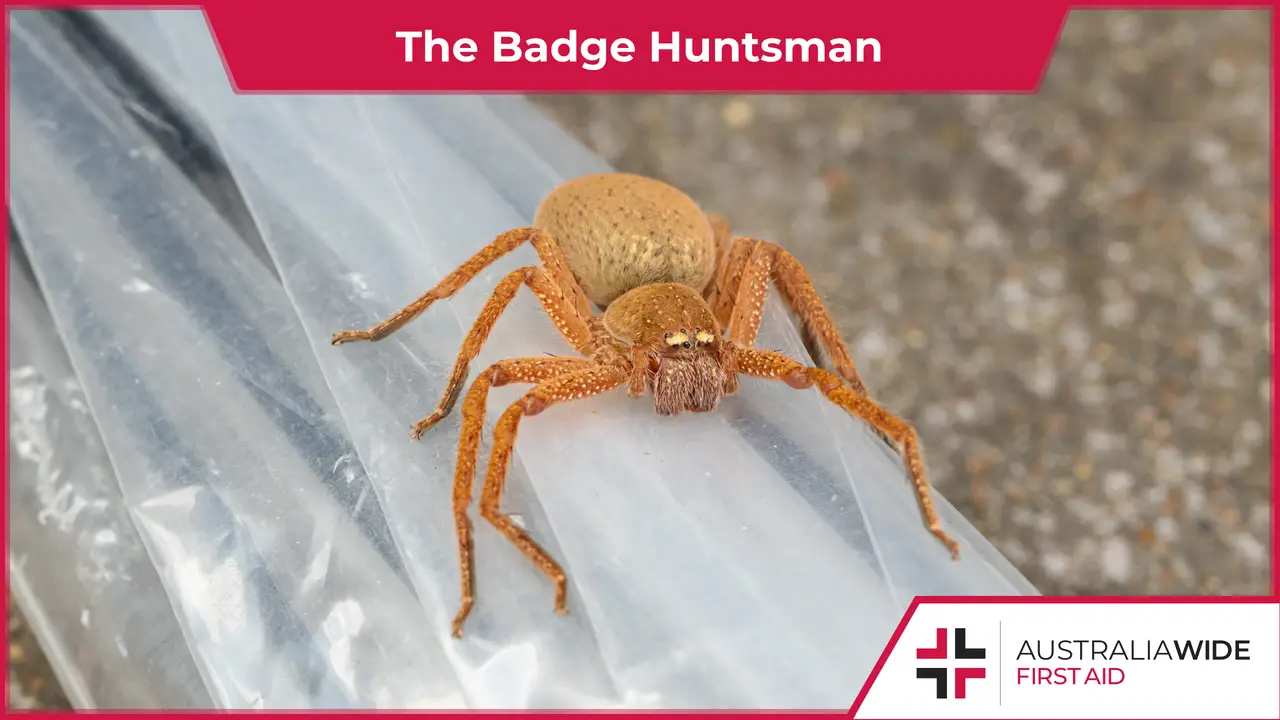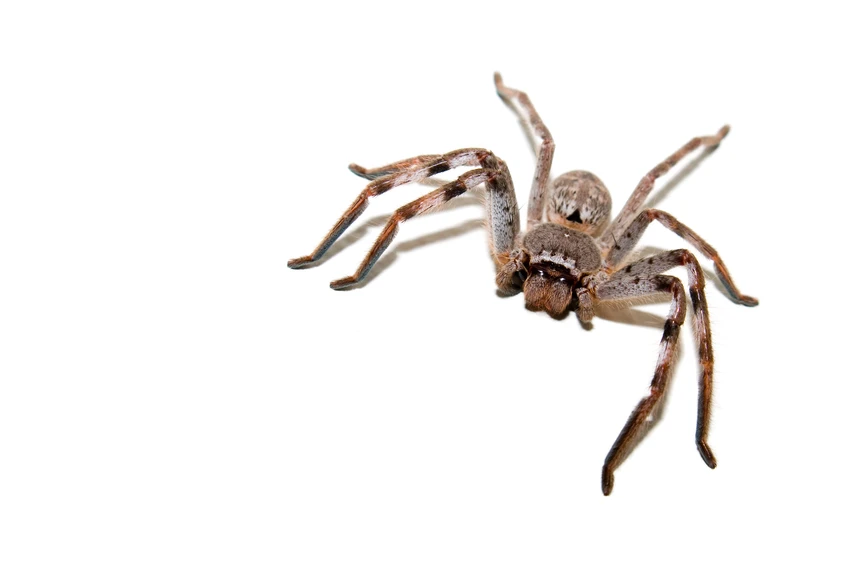First Aid for Hobart's Badge Huntsman


The hairy, long-legged Badge huntsman spider is one of the most visibly frightening spiders found in Hobart.
The Badge huntsman’s ability to move quickly in any direction gives them an extra shock factor.
Dispersed throughout Australia there are approximately 94 different species of huntsman spiders. Badge huntsman spiders make their home under loose bark in woodlands and can give a painful bite. Like most Australian animals, these spiders will only bite if their nest is disturbed or provoked.
Continue reading to find more information about the Badge huntsman and what to do if you encounter one.
And sign up to our Hobart first aid courses to learn more about first aid for spider bites. We offer a general first aid course or a specialised one catered to educators or support staff.
Badge huntsman spiders are fawn (tan) or grey with either a distinctive triangular badge of colour, or small white spots on the underside of their abdomen. While their body length can grow up to 16-20mm, their leg span gives a different impression of size.
The Badge huntsman is differentiated from other huntsman species as its first two pairs of legs are longer than its hind pairs. Huntsman spiders can reach a leg span of 15 - 23cm (about the size of a small ruler).
With leg joints that twist and spread out forwards and sideways, Badge huntsman spiders can move in a crab-like fashion. While they have less flat bodies than other huntsman species, they can still can fit in small crevices, under rocks, and through the small cracks in bedroom, bathroom or kitchen walls.
Badge huntsman spiders can also climb up and down smooth surfaces with ease due to the adhesiveness of the hairs on their legs and feet. These “furry paws” allow them the traction to haul not just their own body weight but also their prey’s up and down walls or roofs.
The Badge huntsman hunts at night and feeds on insects and other invertebrates. During the day, they hide under foliage such as loose bark.
Badge huntsman spiders are often spotted in cars, either running across the dashboard or hiding behind sun visors.
Feeding on insects in dimly lit rooms around the house at night gives the spider an even spookier appearance, as its legs can cast exaggerated shadows.
Badge huntsman spiders like to build a silky retreat under bark for nesting and laying eggs. The egg sac is a flat-like silken capsule.
Females will guard their nest aggressively, rearing up in a defensive display if provoked or disturbed. Avoid provoking, killing or touching the spider as they are known to bite.
Baby Badge huntsman spiders are green in colour before changing into the tan or grey colour of their parents.

Badge huntsman spiders will bite if provoked - usually if a hand or foot comes in close contact.
Apart from resulting in severe localised pain, swelling, sweating, nausea, and vomiting, no other serious or deadly symptoms have been recorded from a Badge huntsman bite.
If bitten, consult the first aid procedure outlined in our spider bite identify and treat article.
A common spider found in Hobart, as well as the rest of Australia, is the Badge huntsman. With leg joints that twist to allow sideways and forward movement and a flat body, the nocturnal Badge huntsman is often spotted in shadows that can accentuate its size and result in a sharp shriek.
A bite from a Badge huntsman can be quite painful and include swelling, nausea and vomiting.
Sign up to our Hobart first aid courses to learn more about first aid for spider bites. We offer a general first aid course or a specialised one catered to educators or support staff.

March 11, 2025
Darwin, the tropical capital of Australia’s Northern Territory, is home to a rich diversity of wildlife - including an impressive array of spiders. From the sprawling webs of golden orb-weavers to the cryptic camouflage of trapdoor spiders, these arachnids play a vital role in the local ecosystem. While some may inspire fear, the majority are harmless and even beneficial, helping to control insect populations.

September 4, 2024
Cat bites, while often underestimated, can lead to serious health complications if not treated promptly and properly. Cats' mouths harbour a variety of bacteria that can cause infections in humans.

April 1, 2024
Encounters with wildlife can often be thrilling, but when it comes to the creature known as the drop bear, the experience can quickly turn dangerous. A sharp increase in recent attacks prompts the need for understanding proper first aid procedures in case of an attack.